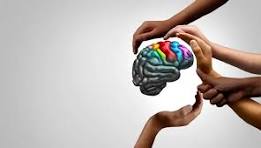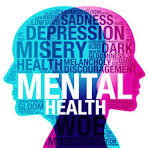Addressing and Coping with Mental Health Issues in the Classroom: A Guide for Teachers and Students
Mental health is a crucial aspect of well-being that impacts not only individuals but also communities. In schools, the mental health of both teachers and students plays a central role in creating a supportive and productive environment. Mental health challenges such as stress, anxiety, depression, and burnout can affect anyone, and understanding how to address and cope with these issues is essential for fostering a healthy school culture.
In this blog post, we will explore practical ways that both teachers and students can manage mental health challenges, promote well-being, and create a positive learning environment.
Creating an Open and Supportive Environment
For Teachers
Normalize Conversations About Mental Health: Teachers can create an environment where mental health is openly discussed without stigma. Encourage students to share their feelings and struggles, whether in class discussions, one-on-one meetings, or through anonymous surveys.
Promote Well-Being: Integrating discussions about mental health into the curriculum can help students recognize the importance of mental well-being. Use lessons, activities, and resources that focus on self-care, stress management, and emotional intelligence.
For Students
Reach Out for Support: Students should be encouraged to talk about their emotions and seek support when needed. Teachers, counselors, or even peers can provide valuable listening ears. Schools should provide information about mental health resources such as counselors and hotlines.
Participate in Mental Health Awareness Programs: Join or start initiatives that raise awareness about mental health within the school community. This could involve events like Mental Health Awareness Week or student-led support groups.
Identifying Signs of Mental Health Struggles
For teachers
- Observe Behavior Changes: Teachers should be aware of signs that indicate a student may be struggling with their mental health, such as changes in academic performance, withdrawal from social interactions, changes in mood, or physical symptoms like fatigue.
- Train for Early Intervention: Teachers can participate in professional development programs that train them to recognize early signs of mental health struggles. With proper training, teachers can approach students with care and direct them to resources that can help.
For Students
- Recognize Personal Struggles: It’s important for students to learn how to recognize signs of mental health challenges, such as increased stress, anxiety, or feelings of sadness. Self-awareness can lead to early interventions, making it easier to address problems before they worsen.
- Know When to Seek Help: If a student feels overwhelmed, experiencing ongoing sadness, or noticing drastic mood swings, it’s important to seek help from a teacher, counselor, or trusted adult. Timely support can prevent further emotional distress.

Building Coping Strategies for Mental Health
For Teachers: 1. Incorporate Mindfulness Practices: Mindfulness exercises such as deep breathing, meditation, and guided relaxation can be introduced in the classroom to help both students and teachers manage stress. These practices improve focus, reduce anxiety, and foster emotional regulation. 2. Create a Routine and Structure: A consistent routine helps reduce anxiety, especially for students who feel overwhelmed by unpredictability. Providing structure in the classroom and setting clear expectations can make students feel safe and in control. For Students: 1. Practice Self-Care: Students should engage in activities that promote relaxation and well-being. Whether it’s a hobby, physical exercise, journaling, or getting adequate rest, self-care plays a vital role in maintaining mental health. 2. Learn Stress Management Techniques: Students can be taught relaxation techniques, such as mindfulness, meditation, or simple breathing exercises. These can be used to manage stress during exams or challenging assignments.
For Teachers
Promoting Mental Health Resources
For teachers
- Provide Access to Counseling Services: Teachers should ensure that students know about available mental health resources, including school counselors, mental health hotlines, and community support services. Being proactive about offering these resources can help students when they need them most.
- Collaborate with Support Staff: Teachers should work closely with school counselors, social workers, and psychologists to create a comprehensive support network. Regular communication among staff ensures that students receive the right help and intervention.
For Students
- Utilize School Resources: Schools often have counselors or mental health programs designed to assist students. Students should be encouraged to utilize these services if they feel anxious, stressed, or depressed.
- Engage in Peer Support: Sometimes, peer support can be just as helpful as professional intervention. Students can look for or create student-led groups that focus on mental health awareness and provide support for one another.
Conclusion
Mental health is an essential part of overall well-being, and addressing it in the classroom is key to creating an environment where both students and teachers can thrive. By fostering open communication, providing resources, promoting self-care strategies, and building a resilient and supportive community, schools can play a vital role in helping everyone cope with mental health challenges. The journey toward better mental health starts with understanding, compassion, and consistent effort from both teachers and students. Together, we can create a positive and supportive environment for all

